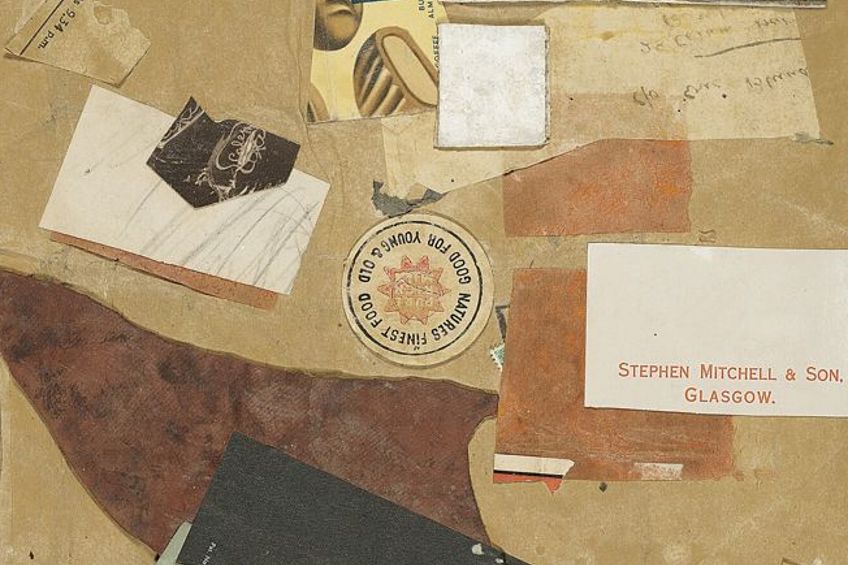Collage Art – Creating With a Collection of Materials
What is a collage and what is the history of collage art? Collage artwork involves using different pieces of source materials, such as newspaper and magazine clippings, photographs, paint, and other found materials to assemble a new image by gluing them onto a canvas or paper. Collage history extends back through the centuries, yet made a significant reemergence in the early years of the 20th century. There are many collage styles, such as Cubist collages, so let’s learn more about art collage!
The History of Collage Artwork
Certain collage techniques originated in approximately 200 BCE, during the time that paper was first invented in China. In Japan, it would not be until the 10th century that collage art began to appear when Japanese calligraphers started to use it for their poems in the form of texts on surfaces applied with glued paper. In Kyoto, Japan, the Nishi Hongan-Ji Buddhist temple still houses a few extant poem collages examples. It was in the Medieval period of the 13th century that collage artwork began to appear in Europe, and in the following 15th and 16th centuries, gold leaf panels began to feature in Gothic cathedrals.

Precious stones were inserted into religious icons and coats of arms. The art collages of Mary Delany are regarded as some of the finest 18th-century collages, examples include Rosa Gallica (1782) and Paeonia Tenuifolia (1778). Certain collage styles were popular for illustrating books in the 19th century, such as those by Carl Spitzweg and Hans Christian Andersen, and hobbyists also often employed art collages for memorabilia such as photo albums. While many institutions still attribute the initial use of art collages to the artists Braque and Picasso to some point around 1912, photographic collage artworks, such as Victorian photocollage were already being created since the 1860s.
These institutions often dismiss these photocollages as mere hobbyist memorabilia, however, they were instrumental in the development of collage styles that would begin to rearrange and manipulate the images of the perceptible world. To acknowledge the influential role that such works had in collage history, the Art Institute of Chicago held an exhibition of the works of photomontage artists such as Mary Georgina Filmer, Alexandra of Denmark, and many others, in 2009.
The exhibition, titled Playing with Pictures then subsequently toured The Metropolitan Museum of Art in New York, as well as the Art Gallery of Ontario.
Collage Art and Modernism
While collage-like techniques were found in a range of various applications, such as photomontage in the pre-20th century era, many scholars believe that collage art as a recognizable style only emerged after 1900. For instance, the Tate Gallery states that art collage history begins in the 20th century and the Guggenheim Museum asserts that the history of collage is connected to the emergence of modernism. Artists such as Picasso and Braque incorporated glued-on patches into their paintings, which collided with the canvas’s surface plane, changing the way art could be created and viewed.
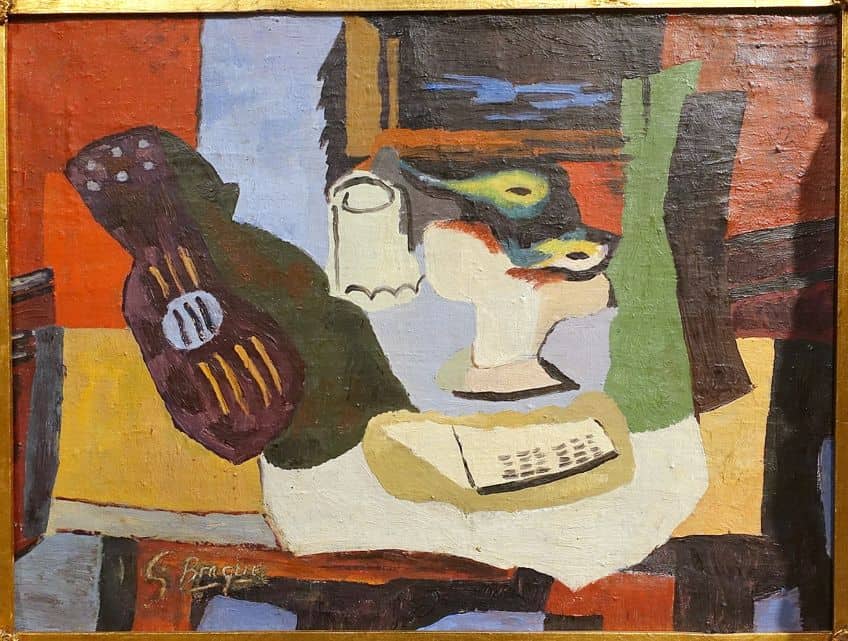
Guggenheim’s definition of collage art adds that it was part of a reexamination of the connection that exists between collages, paintings, and sculptures, with art collages sharing characteristics of both. The addition of contemporaneous pieces of newspaper added context and meaning to the piece through the incorporation of external references. The content of the collage artwork was thereby enriched and imbued with meaning by incorporating pop culture references and allusions to the Balkan war. Many of these works mixed themes that were simultaneously tongue-in-cheek and serious in tone. It was a medium by which the ordinary and the incongruous were brought into the same space, emphasizing the significance of the process over the end result.
Collages Paintings
In the modernist sense, the history of collage started with Picasso and Braque. Their Cubist collages comprised fragments and snippets of varied subject matter, giving them the appearance of deconstructed forms. Many historians believe that Picasso was the first artist to apply collage techniques to oil paintings, while Braque had previously applied the technique to his charcoal drawings. Braque had bought a roll of wallpaper with the design of simulated oak grain. He then proceeded to cut out pieces from the roll and paste them into his drawings.
Shortly after, Picasso started doing the same but instead experimenting with the new medium in his oil paintings.
In 1912, for example, he added a piece of oilcloth to the canvas, in his work Still Life with Chair Caning. When it comes to Surrealist collages, examples are plentiful, however, they tended to steer away from the Cubists’ focus on still-life subject matter. Surrealists such as Joseph Cornell created collage artworks that were more in line with the usual Surrealist aesthetic, creating pieces that were strangely dream-like and fantastical. In 1962, the Sidney Janis Gallery hosted an early Pop art exhibit, introducing many artists that would eventually become the most well-known names in the Pop art world – many of which incorporated collage into the works exhibited.

Another one of the popular collage styles that emerged at this time is known as “canvas collage art”, which involves taking patches of separately pre-painted canvas and gluing them to the surface of another painting. John Walker, a British artist, was known for using this technique in his late-1970s artworks, however, the canvas collage technique had already been an integral part of the works of American artists such as Jane Frank and Conrad Marca-Relli in the early years of the 1960s. Lee Krasner was another artist who used the technique, as she often cut her paintings into pieces after one of her intense self-critiques, after which she would assemble the cut pieces into new collage artworks.
Collages With Wood
One of the collage styles that arose a little later than paper collage art is wood collage. After giving up painting in favor of paper collages, Kurt Schwitters then started experimenting with wood collages sometime in the 1920s. However, there are some scholars that argue that wood collage arose simultaneously with paper collage since the wallpaper that Braques used was imitating woodgrain. Over a 15-year period of experimentation, Louise Nevelson developed her unique sculptural wood collages, which were made from pieces of barrels, wooden crates, furniture, and architectural fragments, starting in the mid-1940s. They looked like massive paintings, and were usually rectangular and painted black. Most wood collage art is much smaller in scale, framed and hung in the same way that a normal painting would be displayed.
It often comprises wood shavings, and bits of wood placed on a canvas or a wooden board.
Such framed wooden collages have a picture-like aesthetic, allowing the artist to explore the material’s inherent qualities while utilizing the language and historical inferences that emerge from the custom of producing images to hang on walls. Wood collage is often used with painting and other mediums in a single piece of art. Wood collage art often utilizes entirely natural wood – such as driftwood or bits of collected and unmodified logs, branches, twigs, or bark.

This has led many to question whether such works can be labeled as collage art, as conventional collage works traditionally incorporated man-made cultural elements which carried a certain contextual significance. Natural and unaltered wood, such as one could encounter in the woods, essentially lacks such context; therefore, the normal contextual distortions associated with the collage art concept, as it was envisioned by Picasso and Braque, cannot occur.
Decoupage
Decoupage is a sort of collage that is typically characterized as a craft. It is the technique of incorporating an image into an object for decoration. Decoupage can include cutting and layering several duplicates of the same image to produce perceived depth. For protection, the image is typically covered with varnish or another sealant. Decoupage artists, like many other artists of the time, started to experiment with a less naturalistic and more abstract aesthetic in the early 20th century.
Henri Matisse and Pablo Picasso were among the 20th-century painters that created decoupage works, the most renowned of which is Blue Nude II (1952) by Matisse.

Decoupage is considered to have originated in East Siberian burial art when nomadic tribes used cut-out felts to mark the tombs of their departed. The custom spread to China from Siberia, and by the 12th century, cut-out paper was being utilized to adorn windows, lanterns, boxes, and many other items. In the 17th century, Italy, particularly Venice, was in the lead of commerce with the Far East, and it is widely assumed that the cut-out paper embellishments entered Europe through these trade relations.
Photomontage
The photomontage is a style of collage produced from photographic elements. It is the technique of creating a composite image by cutting and merging many different photographs. Quite often the composite image was then photographed so that the resulting picture could be rendered back into a uniform photographic image. A similar process is achieved nowadays with image-editing software, and it is known as compositing by professionals.
Photomontage also applies to other ways of assembling images, such as Victorian “combination printing”, which involves printing from many negatives on a single sheet of paper.

Until the ubiquitous use of digital image manipulation, the 19th-century technique of physically merging many photos into a composite and photographing the composite persisted in press photography. The introduction of computer software that executes the alterations digitally, resulting in faster processing and a more consistent result, has made creating a photomontage much simpler. The software also helps to minimize errors by allowing the designer to “undo” mistakes. However, some digital artists are pushing the limits of computer image manipulation to generate incredibly time-consuming creations that equal the demands of conventional art techniques.
Famous Collage Artists
Art Collage is a media as varied as it is politically contentious, with origins in European Dadaism in the early 20th century, shadowing modernism, and making its way through photography. Collage artwork allowed artists to take apart and rearrange existing materials, such as newspapers and periodicals, maps, tickets, propaganda, and photos, to produce aesthetically dynamic hybrids. Art collage, the combination of many materials and images, questions the underlying principle of what it means to produce art while offering a prismatic representation of the 20th century’s societal development and upheavals.
Here are a few of the most notable collage artists that have helped develop the various art collage styles.
Raoul Hausmann (1886 – 1971)
| Artist Name | Raoul Hausmann |
| Nationality | Austrian |
| Date of Birth | 12 July 1886 |
| Date of Death | 1 February 1971 |
| Place of Birth | Vienna, Austria |
Raoul Hausmann, a founding member of Berlin Dada, is acknowledged as pioneering the photomontage technique. Before his leading role in the Dada group, Hausmann sparked his anti-establishment appetite by joining the Die Brücke movement and training under one of its most renowned figures, Erich Heckel.

His anti-art style would play a crucial role in dismantling what he referred to as the “soulless power of the materialist and military machine”, which he argued had paved the way toward a diseased German society. He designed a cut-and-paste “anti-art” style with his collaborator Hannah Höch that represented nothing short of an attack on the visual and ideological criteria that had come to characterize earlier and contemporary avant-garde groups.
After the Group’s dissolution, he effectively redefined himself as a fine art painter and photographer.
Kurt Schwitters (1887 – 1948)
| Artist Name | Kurt Schwitters |
| Nationality | German |
| Date of Birth | 20 June 1887 |
| Date of Death | 8 January 1948 |
| Place of Birth | Hanover, Germany |
Schwitters, unlike many other Dadaists, was located in Hanover, where he remained until the Nazis expelled him from Germany, after which he moved to The Lake District in England. The philosophy of Merz, which Schwitters developed throughout his montages, collages, and assemblages, is about blending all imaginable materials for their inherent artistic qualities. He felt that ordinary things like plasterboard, wood, wheels, and cotton were equivalent in expressiveness to paint itself.

Although his use of found materials connects him to other branches of Dada, his emphasis on society’s throw-aways elicited new connections in the observer and characterized his style. Schwitters’ works had an essential role in the early formation of experiential art. His numerous avant-garde endeavors resulted in his massive “merzbau” sculptures.
These compositions, which were made in collaboration with other avant-garde artists, would begin with one element and then other artists would gradually add others, enabling the entire piece to transform and grow over time.
Hannah Höch (1889 – 1978)
| Artist Name | Hannah Höch |
| Nationality | German |
| Date of Birth | 1 November 1889 |
| Date of Death | 31 May 1978 |
| Place of Birth | Gotha, Germany |
Hannah Höch, a Dada artist known for her sharp political collages, reappropriated and altered imagery and text from the mainstream media to criticize the shortcomings of the Weimar German government. During her career, Höch challenged the marginalization of women in 20th-century Germany. She combined images from illustrated journals, fashion magazines, and photography to develop a form dedicated to proving that art could be produced from the commonplace distractions of modern life.
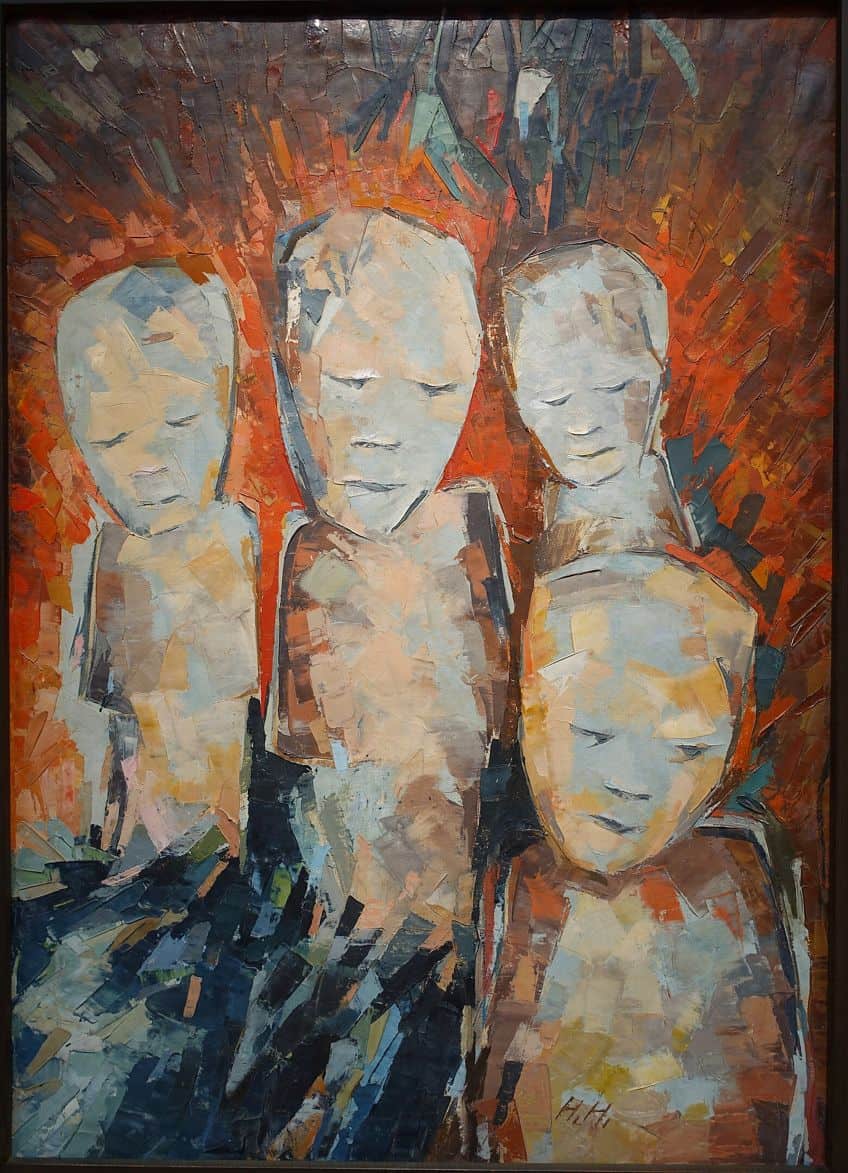
Höch was inspired by the collage artwork of Picasso and fellow Dadaist Kurt Schwitters, and her own works have an equally vibrant and layered aesthetic. She favored metaphoric symbolism to her colleagues’ more straightforward, text-based aggressive style. She was critical of the German government, but frequently limited her criticism to gender inequalities.
She is regarded as an early feminist artist because of her emotive visual responses to the rise of industrial advertisement and the standards of beauty it promoted.
Man Ray (1890 – 1976)
| Artist Name | Emmanuel “Man Ray” Radnitzky |
| Nationality | American |
| Date of Birth | 27 August 1890 |
| Date of Death | 18 November 1976 |
| Place of Birth | Philadelphia, Pennsylvania, United States |
Man Ray was an avant-garde artist from the United States who was a pioneering figure in the Surrealist and Dada movements. Man Ray is most known for his black-and-white photographs and was an innovator in cinema, painting, and collage. He once remarked that his creations were intended to fascinate, irritate, frustrate, mystify, and provoke reflection.

Man Ray’s photomontages were well-known for their Surrealist qualities, which typically featured unusual arrangements of imagery and objects. His works were also distinguished by a dramatic use of shadow and contrast and one of his most well-known photomontages is Observatory Time: The Lovers (1936). His paintings had a considerable impact on the advancement of Surrealist photography and are still appreciated for their distinct aesthetic style.
Ray’s photomontages, such as his numerous exposures of Alice Prin, deal with form and femininity.
Eileen Agar (1899 – 1991)
| Artist Name | Eileen Forrester Agar |
| Nationality | British-Argentinian |
| Date of Birth | 1 December 1899 |
| Date of Death | 17 November 1991 |
| Place of Birth | Buenos Aires, Argentina |
Eileen Agar, a British artist, was one of the few female members accepted on her own creative merits into the Surrealist group, rather than as a muse or model. Agar’s compositions are societal criticisms combining irony and humor. Her collages were defined by their incorporation of found items such as beads, shells, and other natural components, as well as materials such as paper and fabric.
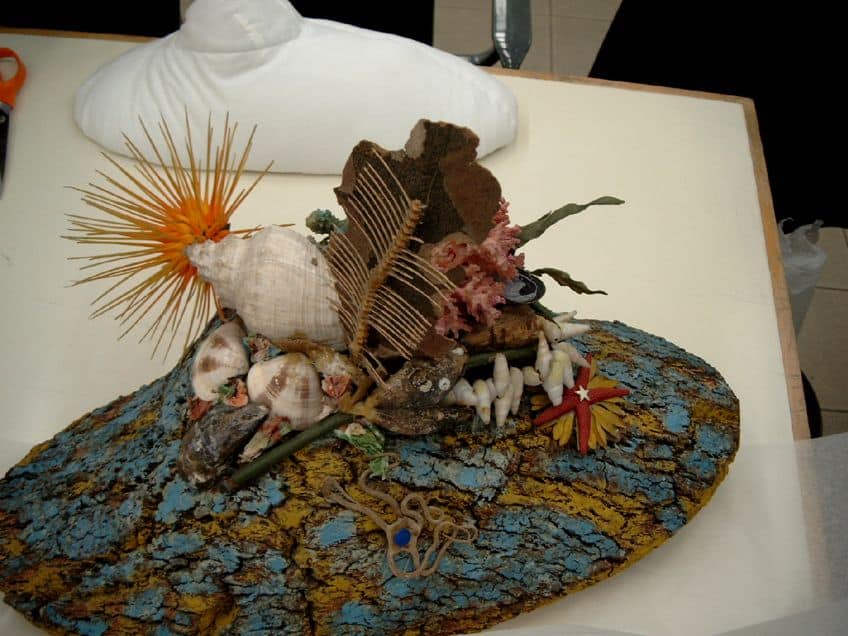
She regularly integrated these elements into abstract works inspired by her curiosity for the irrational and subconscious parts of the mind. Her collages were also characterized by their incorporation of metaphor and symbolism, which typically revealed the underlying meanings and philosophies of her work. One of Agar’s most well-known collage artworks is titled Angel of Anarchy (1936) and features a woman’s head with a halo made from shells.
Not only were her works well received by her fellow Surrealists, but continue to be appreciated today.
Joseph Cornell (1903 – 1972)
| Artist Name | Joseph Cornell |
| Nationality | American |
| Date of Birth | 24 December 1903 |
| Date of Death | 29 December 1972 |
| Place of Birth | Nyack, New York, United States |
Joseph Cornell’s pioneering work in assemblage, inspired by the Surrealists, took collage in new and interesting creative directions. He built assemblage sculptures out of discarded objects he acquired from various sources, such as postcards, old photos, and other materials. Cornell, who rejected Surrealism’s violent and carnal elements, favored what he called the “white magic” aspect of Surrealism exemplified by Max Ernst.
Cornell’s boxes were typically defined by their dreamy, mystical appearance and the utilization of unusual object combinations. He also produced more traditional collages, which were the typical two-dimensional form and often used the same processes and materials as his assemblage boxes. Cornell’s art is recognized for its vivid imagery and ability to evoke a sensation of awe and intrigue.
His collages and assemblages are still recognized today for their unusual use of discarded objects and the captivating story they tell.
Nancy Spero (1926 – 2009)
| Artist Name | Nancy Spero |
| Nationality | American |
| Date of Birth | 24 August 1926 |
| Date of Death | 18 October 2009 |
| Place of Birth | Cleveland, Ohio, United States |
Nancy Spero was a painter and feminist artist from the United States. Her expressive art is defined by its metaphorical depiction of cultural and sociopolitical concerns, boldly addressing racism, brutality, and misogyny in contemporary society. She has always endeavored to convey friction in meaning and form in her artworks in order to achieve a sense of authenticity.
Throughout her career, she consistently changed power dynamics and created new feminist perspectives in places that would otherwise be devoid of them. Her preoccupation with these themes is best reflected in her collage Notes in Time (1979). The frieze-like collage, motivated by Grecian scrolls and the tale of Troy, is made up of 24 panels accented by 96 quotes, including poetry, and numerous female figures.
It is a huge non-narrative tribute to the feminine form and also commemorates the feminine struggle against political stereotyping.
John Stezaker (1949 – Present)
| Artist Name | John Stezaker |
| Nationality | British |
| Date of Birth | 1949 |
| Date of Death | N/A |
| Place of Birth | Worcester, United Kingdom |
In 1973, British artist John Stezaker enrolled at the Slade School of Art and went on to create work that contested Pop art’s popularity. His collages are humorous; his use of glossy 1950s pictures, of dashingly-dressed men and celebrities, mixed with images of landscapes and other features, created an uncanny impression. His most well-known work is the Masks series, which was made by capturing individual portraits, slicing them in half, then mixing them with another portrait to produce a new image. This body of work delves into the concept of identity and the link between society and the individual. His art frequently explores issues of history and memory.
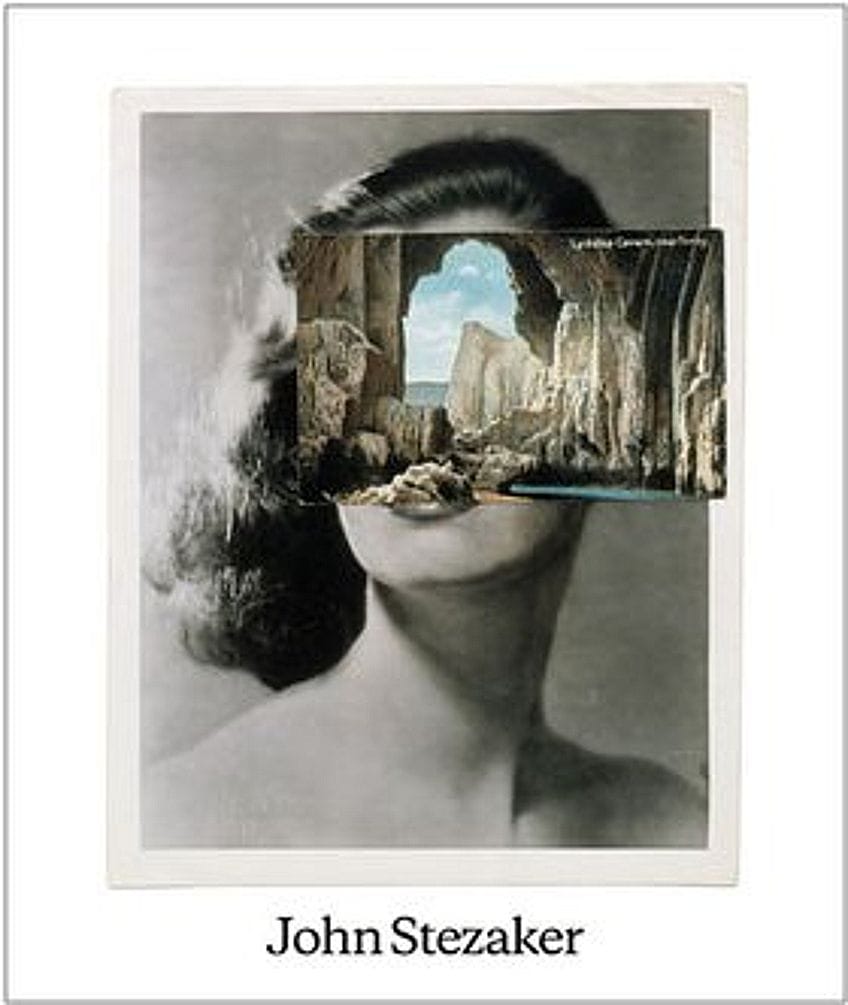
That concludes our look at the collage history and the various examples of well-known collage artists. When it comes to collage styles, there are many that splintered off from the early attempts, such as photomontages, decoupage, cubist collages, and assemblages. By selecting various images from popular culture and the media of the time, artists were able to create collage artworks that contained messages about the state of the world in which they found themselves. Not all collage paintings were of such a serious nature, though, and some were satirical and even just downright humorous. Each artist was able to take this open-ended style and do with it what they felt appropriate, to accurately deliver their message through the visual medium of collage.
Frequently Asked Questions
What Is a Collage Artwork?
A collage artwork typically incorporates pre-made objects into works of art. It can consist of found objects, photos, ribbons, patches of canvases, fabrics, and naturally occurring materials. There are some artists who use only natural objects. However, this does not necessarily fit with the intention of certain collage movements to portray the industrialized nature of man-made objects, and some artists do not regard artworks made with shells, beads, and wood to be true collage art.
Where Did Collage Art Originate?
Georges Braque, one of the leaders of the Cubist movement, is said to be the first artist who started playing around with collage artworks. He added pieces of wallpaper that mimicked wood grain to his drawings. Then, shortly afterward, Picasso started to do the same thing, however, unlike Braque, he did not use it in charcoal drawings, but rather in his own oil paintings. The output of both artists would end up having a huge impact on the emergence of the Surrealist movement, as well as other Avant-Garde schools. It was not just popular in Europe, but also became a style embraced in Latin America, Mexico, and the United States.
What Are Popular Collage Styles?
One of the most popular – and oldest – styles of collage is photomontage collage work. This entails gluing various elements cut out from photos to create a new image. Often, the composite was then photographed so that it became one single image. Nowadays, we can use software to easily do the same thing. Decoupage is another type of popular collage that requires pasting the same image in layers to give it depth and then applying it to an object. Collages can also be made of wood, using pieces of found wood as well as wood shavings. However, some argue that this takes away from the inherent political message embedded in most collage artworks due to the use of contemporaneous clips from magazines and newspapers. However, they are still technically regarded as collage artworks.
Jordan Anthony is a Cape Town-based film photographer, curator, and arts writer. She holds a Bachelor of Art in Fine Arts from the University of the Witwatersrand, Johannesburg, where she explored themes like healing, identity, dreams, and intuitive creation in her Contemporary art practice. Jordan has collaborated with various local art institutions, including the KZNSA Gallery in Durban, the Turbine Art Fair, and the Wits Art Museum. Her photography focuses on abstract color manipulations, portraiture, candid shots, and urban landscapes. She’s intrigued by philosophy, memory, and esotericism, drawing inspiration from Surrealism, Fluxus, and ancient civilizations, as well as childhood influences and found objects. Jordan is working for artfilemagazine since 2022 and writes blog posts about art history and photography.
Learn more about Jordan Anthony and about us.
Cite this Article
Jordan, Anthony, “Collage Art – Creating With a Collection of Materials.” artfilemagazine – Your Online Art Source. October 16, 2023. URL: https://artfilemagazine.com/collage-art/
Anthony, J. (2023, 16 October). Collage Art – Creating With a Collection of Materials. artfilemagazine – Your Online Art Source. https://artfilemagazine.com/collage-art/
Anthony, Jordan. “Collage Art – Creating With a Collection of Materials.” artfilemagazine – Your Online Art Source, October 16, 2023. https://artfilemagazine.com/collage-art/.


